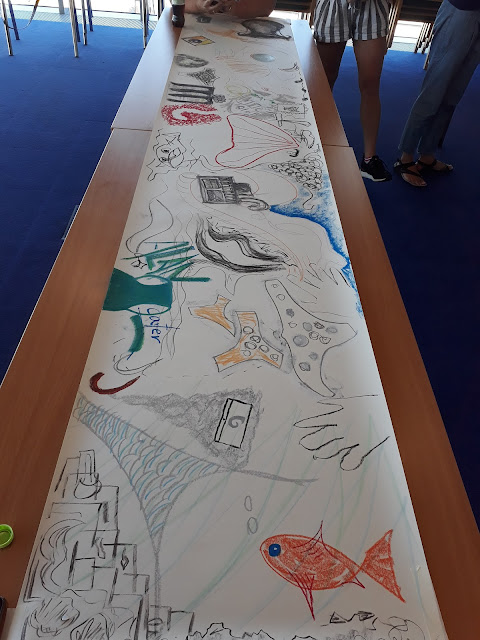Interpretative : "Meaning - Usage - Examples"
 Today at the library
was a reflective, interactive, and creative experience - providing an
introduction to assignment two.
Today at the library
was a reflective, interactive, and creative experience - providing an
introduction to assignment two.
As a group, it was an opportunity to be creative with how we share knowledge about our chosen objects by reflecting our findings through visual and verbal representation.
We were joined by Kate
Davey from Outside In who presented an overview of the organization,
and the support that they offer artists who face barriers when
accessing the art world.
VERBAL
Kate was also keen to hear about our research objects, an opportunity for each of us to respond verbally to interpret our findings.
I learnt that it is easier to describe something that I am familiar with, but being on the receiving end is far more difficult without visual references and background information!
This emphasised the importance of clear and concise responses when interpreting something to an audience.
It is good practice to provide accurate definitions, factual examples and meanings, strong descriptors, and key information when applying verbal and written responses.
VISUAL
Interpreting something visually allows us more creative freedom.
Anna and Kat set us a task, each of us had the opportunity to talk about our research objects, whilst the group responded by drawing visual interpretations onto paper to create a collaborative collection of our objects.
I found this a fun activity, and a productive way to indentify and share meaningful suggestions and ideas.
Part one (2)
Philip Moore Callow Kermode, naturalist and pioneer of Manx archaeology (1855-1932) and his connection to the "Crosh Bollan".
https://www.imuseum.im/search/collections/objects/mnh-museum-27832.html
Part two
Proposed suggestions for my interpretative response to the "Crosh Bollan".
"Traditionally used as a talisman or lucky charm by seafarers to ward against the perils of the sea, and to ensure profitable catches for fishermen".
Timeline?
Tessellation - shapes?
How is it worn - garments - jewellery?
Postcards - information?
https://duckduckgo.com/?q=bollan+cross&t=ffab&iar=images&iax=images&ia=images








.jpg)
.jpg)







Comments
Post a Comment